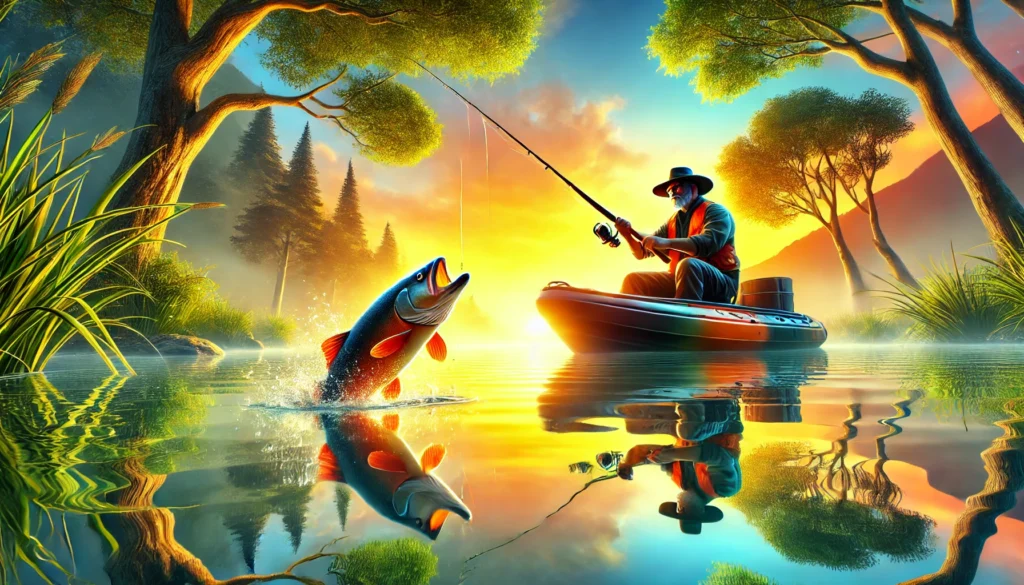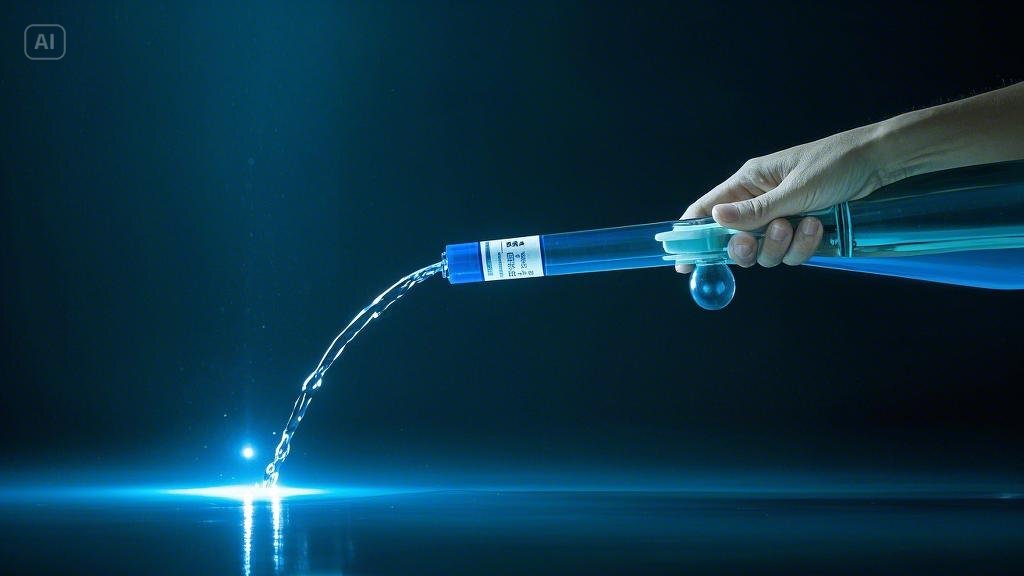How to Catch More Fish: Mastering the Art of Fishing Success. Fishing is an age-old pursuit, bridging relaxation and the thrill of the catch. Whether you’re a seasoned angler or a newcomer eager to cast your line, learning how to catch more fish is a skill worth mastering. This guide dives deep into the essential tips, techniques, and tools to make every fishing trip a success. From choosing the right equipment to understanding fish behavior, we’ll equip you with knowledge to level up your fishing game.
The Basics of Catching More Fish
Before diving into advanced strategies, let’s start with the fundamentals:
1. Understand the Fish You’re Targeting
Each fish species has unique preferences for habitat, bait, and feeding times. Spend time researching:
- Preferred habitats: Do they linger in shallow waters, near structures, or in open lakes?
- Feeding habits: Are they surface feeders, bottom dwellers, or mid-water cruisers?
- Seasonal changes: Many species change their behavior based on the season.
2. Choose the Right Equipment
Having the right rod, reel, and tackle is critical.
- Rod and reel: Match these to the species and fishing style. For example, ultralight rods work well for panfish, while medium-heavy rods suit bass or pike.
- Line selection: A braided line offers durability, while monofilament is more forgiving and stretchy, ideal for beginners.
- Lures and bait: Select colors, shapes, and sizes to mimic the natural prey of your target fish.
3. Scout the Waters
Knowing where to fish is just as important as knowing how to fish. Use maps, apps, or local fishing reports to identify hot spots. Look for:
- Structures like submerged logs, rocks, and weed beds.
- Depth changes such as drop-offs or ledges.
- Water temperatures that match your target species’ preferences.
Techniques to Boost Your Catch Rate

1. Master Casting Accuracy
Casting to the right spot increases your chances of attracting fish. Practice these casting techniques:
- Overhead casting: for distance and accuracy.
- Sidearm casting: ideal for underhand precision near structures.
- Flipping and pitching: Perfect for targeting fish near vegetation or docks.
2. Use the Right Retrieval Techniques
Fish are more likely to strike if your lure mimics natural prey movements. Experiment with these retrieval styles:
- Steady retrieve: Great for crankbaits and spinnerbaits.
- Stop-and-go: Adds variety to jerkbaits or soft plastics.
- Twitching or jigging: Effective for mimicking injured baitfish.
3. Adapt to Weather and Water Conditions
Fish behavior is heavily influenced by weather and water conditions.
- Overcast skies: Fish are more likely to venture from cover. Use vibrant or noisy lures.
- Clear skies: Fish stay in shaded areas; use subtle presentations.
- Windy days: Fish face into the current to feed; cast upwind for natural lure presentation.
4. Understand the Role of Depth
Depth plays a huge role in where fish congregate. Use a depth finder or fish finder to locate schools and structures. Adjust your techniques for:
- Shallow waters: Cast near weed lines or structures.
- Mid-depth fishing: Use crankbaits or swimbaits.
- Deep waters: Drop-shot rigs, jigs, or deep-diving crankbaits are effective.
How to Catch More Fish

Mastering Live and Artificial Baits
Live Bait Tips
Live bait can be a game-changer for enticing stubborn fish.
- Common live baits: worms, minnows, crayfish, or leeches.
- Keep bait fresh: Use aerators for minnows or cool, damp conditions for worms.
- Hook placement: Hook through the lips, back, or tail to allow natural movement.
Artificial Bait Tricks
Artificial lures offer versatility and reusability.
- Topwater lures: great for surface action during dawn or dusk.
- Soft plastics: mimic worms, lizards, or grubs; use them for bass or walleye.
- Spinnerbaits and crankbaits: Cover water quickly and attract predatory fish.
Fishing Strategies for Different Seasons
Spring Fishing
- Fish are more active post-spawning.
- Focus on shallow waters near weed beds or spawning grounds.
- Use jigs, spinnerbaits, or soft plastic.
Summer Fishing
- Fish retreat to deeper, cooler waters during the day.
- Early morning and late evening are prime times.
- Try topwater lures, deep-diving crankbaits, or live bait rigs.
Fall Fishing
- Fish feed aggressively to prepare for winter.
- Look for schooling baitfish and cast crankbaits or spoons.
- Target areas near drop-offs or current breaks.
Winter Fishing
- Ice fishing requires specific gear and patience.
- Use small jigs, live minnows, or waxworms.
- Drill multiple holes to find active fish.

Tech Gadgets to Enhance Your Fishing
1. Fish Finders
Fish finders use sonar to locate fish and underwater structures. Popular brands like Garmin, Humminbird, or Lowrance offer models for various budgets.
2. Fishing Apps
Apps like Fishbrain, Navionics, or Angler’s Log provide maps, fishing reports, and tips from other anglers.
3. Weather Monitors
Devices or apps that track barometric pressure and weather changes can predict fish activity levels.
Conservation Tips for Ethical Fishing
While catching more fish is rewarding, responsible fishing ensures sustainable fisheries for future generations.
- Practice catch and release: Use barbless hooks and handle fish carefully to minimize harm.
- Follow size and bag limits: Respect local regulations to prevent overfishing.
- Dispose of waste responsibly: Keep waterways clean by packing out trash and discarded lines.
Final Tips for Success
- Patience is Key
Fishing requires persistence. Some days may be slow, but perseverance pays off. - Learn from Others
Join fishing clubs, watch tutorials, or talk to local anglers to gain new insights. - Document Your Trips
Keep a fishing journal or use apps to track what works and what doesn’t. Over time, you’ll build a personalized playbook.
A Lifestyle of Adventure
Fishing isn’t just about the catch; it’s about the moments spent outdoors, the connections with nature, and the memories made. As you apply these tips and techniques, remember to enjoy the journey.
Now, grab your gear and master it with Aquaplanetview—because every cast brings the possibility of a new adventure.

Conclusion: Mastering the Art of Catching More Fish
Catching more fish isn’t just about luck—it’s about mastering a blend of preparation, technique, and adaptability. By understanding your local waters, choosing the right gear, and perfecting your timing, you can turn every outing into a productive adventure. Remember, fishing is as much about the journey as it is the catch. Each day on the water teaches us something new, reminding us why we fell in love with this timeless pursuit in the first place.
So, gear up, stay curious, and embrace the thrill of the unknown. The next cast could land your personal best! Tight lines, and may every fishing trip leave you astonished by the wonders of the water.
Hooked on Tech: Exploring the latest Fishing Gadgets that Anglers swear by.
In the realm of angling, where tradition and technology often converge, a new wave of fishing gadgets has emerged, transforming the way anglers approach their craft.
From advanced fish finders to smart bait systems, these innovations have not only revolutionized the fishing experience but have also garnered a loyal following among anglers worldwide.
Yakima Bait 206
$3.99 (as of November 18, 2025 04:58 GMT +00:00 – More infoProduct prices and availability are accurate as of the date/time indicated and are subject to change. Any price and availability information displayed on [relevant Amazon Site(s), as applicable] at the time of purchase will apply to the purchase of this product.)RALERA Fillet Knife Set for Beginner, Fishing Pliers Precisely, Fish Measuring Tape, Non Slip Grip Fishing Knife, Saltwater Fishing Accessories, Great Value Fishing Tackle
$17.99 (as of November 18, 2025 16:24 GMT +00:00 – More infoProduct prices and availability are accurate as of the date/time indicated and are subject to change. Any price and availability information displayed on [relevant Amazon Site(s), as applicable] at the time of purchase will apply to the purchase of this product.)PLUSINNO Fishing Gear, Fishing Tools, 7PCS Fishing Accessories, Corrosion Resistant Fishing Pliers Kit, Fishing Knife, Floating Fish Lip Gripper Fishing Gifts for Men, Gifts for Fishermen
$24.99 (as of November 18, 2025 22:28 GMT +00:00 – More infoProduct prices and availability are accurate as of the date/time indicated and are subject to change. Any price and availability information displayed on [relevant Amazon Site(s), as applicable] at the time of purchase will apply to the purchase of this product.)Beyond Braid EZ Fishing Line Spooler – Portable Table Mounted Reel Spooler for Spinning & Baitcasting Reels – Adjustable to Fit Multiple Size Spools of Fishing Line
$17.99 (as of November 18, 2025 22:28 GMT +00:00 – More infoProduct prices and availability are accurate as of the date/time indicated and are subject to change. Any price and availability information displayed on [relevant Amazon Site(s), as applicable] at the time of purchase will apply to the purchase of this product.)A complete set of 175 fishing accessories, including fishing gear box, metal bait and silicone soft bait, hooks and weight accessories,Fishing bait kit suitable for seawater and freshwater (175)
Now retrieving the price.
(as of November 18, 2025 16:24 GMT +00:00 – More infoProduct prices and availability are accurate as of the date/time indicated and are subject to change. Any price and availability information displayed on [relevant Amazon Site(s), as applicable] at the time of purchase will apply to the purchase of this product.)KastKing Paradox 4.5-Inch Fishing Scissors, Stainless Steel Precision Fishing Line Cutters With Non-Slip Grip, Protective Sheath, and Neck Lanyard, Small Scissors for Braided Fishing Line
$7.99 (as of November 18, 2025 02:18 GMT +00:00 – More infoProduct prices and availability are accurate as of the date/time indicated and are subject to change. Any price and availability information displayed on [relevant Amazon Site(s), as applicable] at the time of purchase will apply to the purchase of this product.)Spro Bucktail Jig-Pack of 1
Now retrieving the price.
(as of November 18, 2025 04:58 GMT +00:00 – More infoProduct prices and availability are accurate as of the date/time indicated and are subject to change. Any price and availability information displayed on [relevant Amazon Site(s), as applicable] at the time of purchase will apply to the purchase of this product.)

























